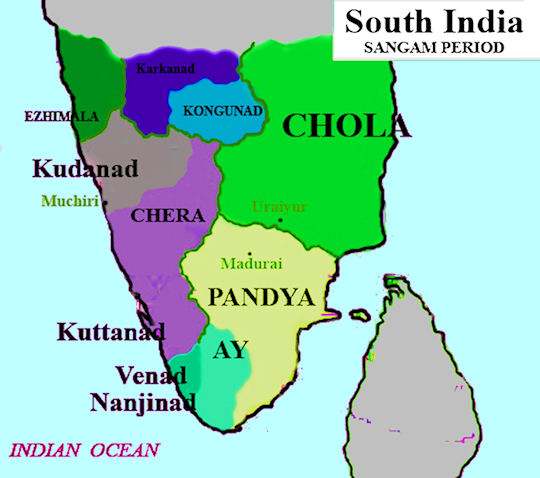Introduction : Chola administration
Cholas had good administrative system. They had a centralised administrative system. King was not absolute. The practice of crown prince becoming the king was in vogue. A council of Ministers assisted the king. The intimate group of the King was called “Udanakootam”. The empire was divided into many divisions (Mandala). During the time of Rajraja Chola I there were eight Mandalas. Mandalas were divided into Nadus (Kottam), Nadus in turn were divided as “Olanadus”. Village administration was looked after by Grama Sabha.

Village administration
An important feature of the Chola administration was village autonomy. People of the village looked after the administration through their own elected representatives. This administrative system became famous during the Chola period. Uttarameruru inscription of Paratanka I gives us clear information about the village administration. According to this inscription, Uttarameruru village was divided into thirty parts (Kudumbu). One representative from each unit was elected for a period of one year. The members were elected through Kuduvalai (Lucky Draw) system. Villagers assembled in the temple on the day of election. The names of candidates to be elected were written on palm leaves and put it a pot. Then a small boy was asked to pick leaves one after the other in the presence of everybody and thus the representatives were elected.
Elected representatives had to work in the Annual Committee, Garden Committee and Tank Bund Committee. These committees were called “Variyam”. The representatives were called “Variya Perumakkal”. These committees worked for 360 days. The village committees performed duties like the protection of village property, collection of taxes and the protection of temples, lakes, groves and forests etc. The resolutions of the Committee were written. The central administration did not interfere in the village administration unnecessarily.
Minimum Qualifications of members
- The candidate should have a minimum of 1/2 acre of taxable land.
- Should reside in his own house built in his own site.
- Should be more than 35 years and less than 70 years of age.
- Should have knowledge of Vedas, Brahmanakas and Commerce.
- Should possess good character.
Disqualifications
- Disqualified for re-election if he is a member of any committee continuously for the previous 3 years.
- Those in the committee who do not submit accounts and his close relatives.
- Wicked, cheat, alcoholic, thieves, accused of murdering Brahmins and committing adultery.
This way certain minimum qualifications and disqualifications were followed in the village administration. Scholars have termed the Chola villages administration as “Small Democratic States”. (Sources: Wikipedia, NCERT, Gktoday).
Read also:>>
- Samudragupta : His Military Conquests and Victories
- How were Indus Valley and Vedic Civilizations different from each other?